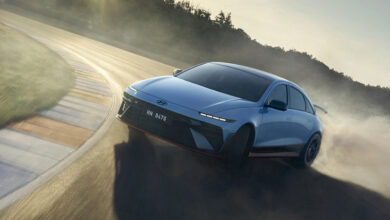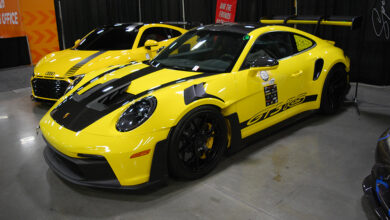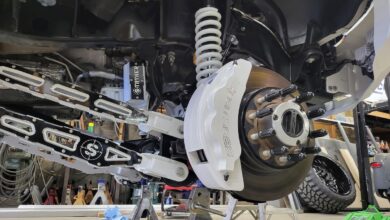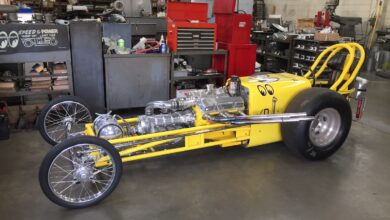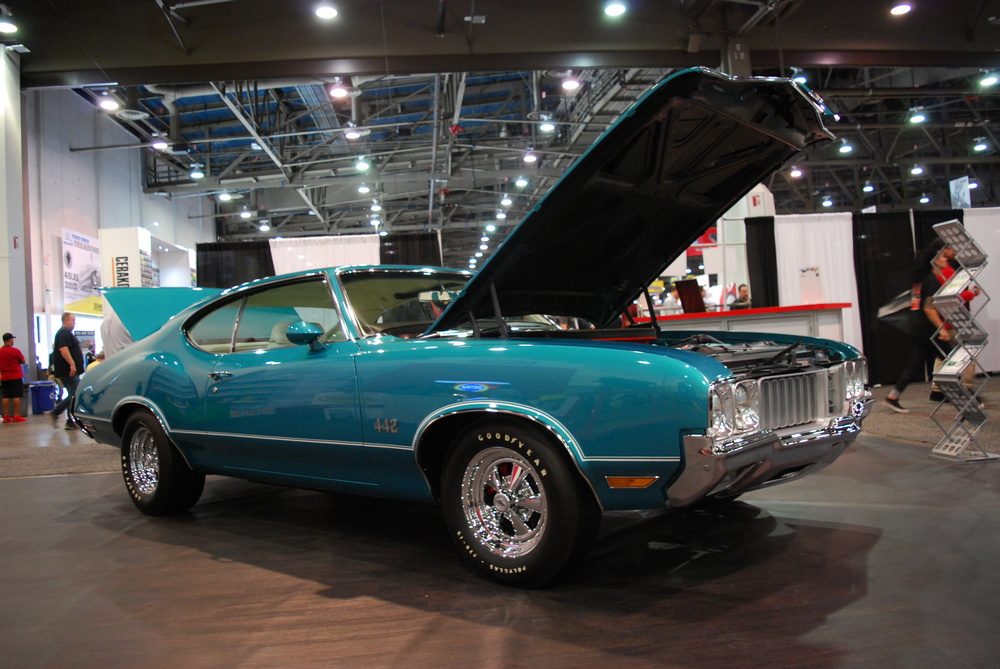
This article originally appeared in the March 2023 issue of THE SHOP magazine.
If you’re uncertain about the classic car market heading into 2023, a panel of experts has some advice:
Stop worrying and start driving.
Sharing their thoughts at the Classic-Car Trends: Preparing for the Future seminar during the 2022 SEMA Show, panel members expressed optimism that the classic car market is more than prepared to weather a variety of potential storms, ranging from a soft economy to the advent of electric vehicles.
“COVID helped drivers realize priorities—life is short and fragile,” says John Kruse, principal and auctioneer at Worldwide Auctioneers. “People started looking at what’s important… there’s a lot of enjoyment to be had with these vehicles.”
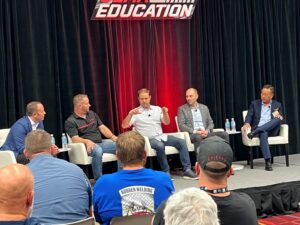
A SENSE OF COMMUNITY
The numbers reflect a strong and thriving market. Jonathan Klinger of Hagerty reports identifying more than 2 million classic vehicles in North America in the past 12 months, with over 300,000 transactions representing $12 billion.
But even stronger than the economic potential are the lifelong bonds forged through shared appreciation of the cars themselves and the emotions they evoke.
“Camaraderie is huge. We’re all in the same club,” says Mike McCullough of Barrett-Jackson. “People used to buy whatever someone said was collectible. Now they want to connect.”
Be it at an auction, car show or related gathering, many of those connections are made in person. Klinger points to a rise in local Cars & Coffee events nationwide as an example.
“You’re there for an hour with like-minded people,” he says.
“Like-minded” doesn’t mean “close-minded,” however, as enthusiasts and shops continue to accept a wider definition of “classic” that now includes vehicles from the 1980s, ’90s and even today.
“A cool car is a cool car,” says Wade Kawasaki of The Wheel Group, who moderated the event.
It’s a passion that’s both very public and very private.
“Whatever the vehicle, does it speak to the experience of that owner?” asks Klinger.
Kruse suggests answering this query:
“What’s valuable to you? Think of the true value and the value to the community.”
BEHIND THE WHEEL
If there’s one trend that’s driving the market, it’s just that—driving.
“Over the last two years, people are driving their collector cars more,” says Klinger. “The market is taking off on driver-friendly vehicles.”
While traditional car insurance transactions saw a slowdown once COVID hit, “for us, activity went up, and some newbies started working on cars,” he adds.
McCullough agrees that more owners are looking to get behind the wheel.
“Usability has changed over the past 20 years as Barrett-Jackson has broadened our segments,” he says. “We are seeing people still investing the same or even more dollars, but they want something they can use.”
When officials at the Bring a Trailer online auction site began crunching numbers following the first days of the pandemic, “we thought the activity would be primarily older cars,” says Randy Nonneberg of Bring a Trailer Media, “but people were buying daily drivers. They were filling the first, second and third stalls in their garage.”
For aftermarket professionals entrusted with the care and maintenance of these vehicles, it equates to added opportunities, he explains.
“People are using them much more. They are important to their owners, and they’ll need tires, paint, etc.”
These days, questions of drivability often lead inevitably to discussions of electric power plants to replace traditional internal combustion engines. The panelists see room in the market for such conversions.
With enthusiasts having modified vehicles since the beginning, electric “provides another option for people,” says Nonneberg. “I personally like (traditional) restorations, but can see why people would be drawn to it.”
McCullough says Barrett-Jackson has already had such EV conversions come across the podium.
“Technology is technology and I think you’ll see more of it with the younger generation,” he predicts. “There definitely will be a market.”
His preference, however, would be to preserve extremely rare and/or valuable vehicles in their original state.
“Maybe (convert) those that would never be a restoration candidate otherwise,” he suggests.
YOUNG AT HEART
Will the next generation of drivers continue to have the passion and drive to maintain a healthy classic car market? Kruse notes it’s a question that’s been asked since at least the 1960s.
Strong interest is “reflected in the growth of Cars & Coffee and other grassroots events that help bring in a younger crowd,” says McCullough, along with a noticeable shift in wealth to the next generation of drivers.
“Our future collector events will be directed at nurturing the hobby and filling the pipeline,” he adds.
Nonneberg explains that BAT’s online platform naturally skews toward a younger audience and that activity and support continues to increase.
“More people are considering this type of car for the first time,” he says.
Finally, Kruse reveals that as more and more older collectors start transitioning their collections, many classics will become more affordable and more available.
“It’s time to get in and start having fun.”
